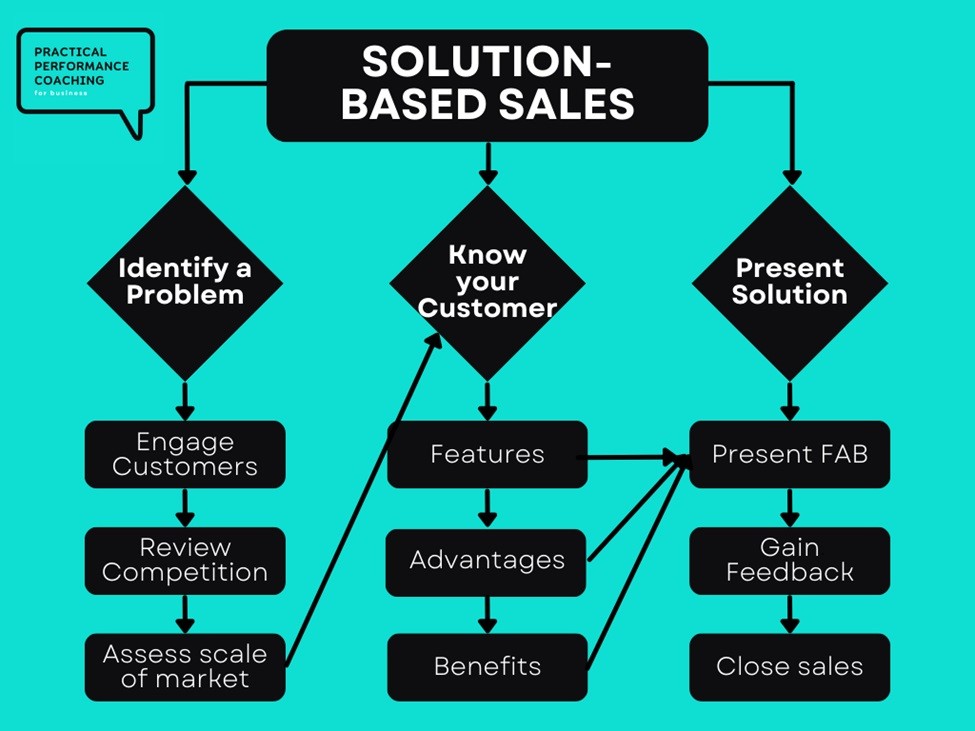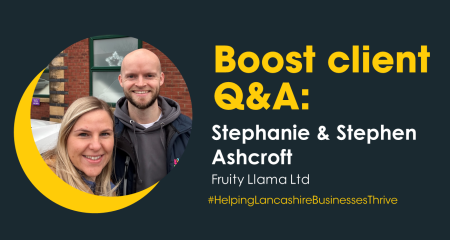
Success for most businesses is revenue generation, which almost always requires sales. Sounds obvious, but having a great service or product to sell requires a strong business plan to drive engagement and growth with potential customers and advocates.
Increasingly businesses are less able rely on commissioning and grants during startup stages, and therefore need to drive more commercial revenue generating activities through sales and marketing. In all instances, SMEs benefit from a customer journey and growth strategy which is inclusive but feels tailored to the target audience.
Daniel Fenton, Boost business adviser on Boost’s Flying Start programme outlines his three-part strategy to explain the three processes behind sales.
As a business adviser and specialising in sales and service performance coach, my role is all about helping people develop new resources and knowledge to be more successful in business.
My coaching focusses on supporting individuals and teams to develop a flexibility in mindset and perspective with increased emotional intelligence and communication skills.
Every customer journey can be considered a customer sales process, whether it be a quick online purchase which is largely automated to a client relationship as an individual and lasts for years. Sales can happen quickly and having the right business plan, legal structure and policies along with helpful advice, underpins sustainable and compliant customer sales.
Adopting a solutions-based approach to sales not only enables continuous improvement but also shifts your objectives to ones which are more customer centric and remove the “urgh” most people feel when they think of the word “sell”.
By having clear plans and mapping a tangible path for growth of revenue, will make the fundamental steps behind the sales process even more straightforward. These are:
These are explained below in more detail.
How can you improve the lives of your customers? That may sound rather grand, but you are aiming to offer a solution not a tangible widget or product.
Research is fantastic and most SMEs start from anecdotal evidence, however your objective should be to gain as much feedback as possible as often as possible. To truly understand the customer’s problem, you need to engage stakeholders in your market, using video calls, and in person, to get a true reflection of the scale of the problem, asking them questions and almost getting them into the mindset of having the problem and solution as you develop your proposition.
Relying on marketing, whether website content or direct marketing, allows you to apply your own voice and interpretation to what is being shared. All too often we misread emails, social media posts etc., because we read it in the voice or tone we have at that time rather than being open to the perspective of our customers.
If you see a gap in your target market to help improve the lives of your customers, you will gain more from speaking with them. Be prepared to be challenged, ask open questions, and accept that you may have to adapt to their needs and aspirations. Incentivise the exchange of that information and being approachable.
Review what rivals are doing and how they highlight the problem and critically assess how your business compares and where you can seek to improve. Assess the scale of the problem/market because it there is not sufficient opportunity to generate revenue it is simply not a commercial sustainable solution.
If you are entering an already populated market and you’re not the first to identify the problem, then knowing your customer and differentiating your solutions is key.
Understanding your target audience leads to far more natural and authentic conversations regardless of whether they are online or in-person. Awareness and flexibility of your language improves communication along with the customer sales journey in which your customer-centric values show in every interaction.
For those with previous sales training knowledge, you may already be familiar with the concept of FAB (Features, Advantages, and Benefits). “Features” are the characteristics of the product or service that you offer, then “Advantages” explain how the features benefit the customer. The “Benefits” are the results and value that the customer derives from using your product or service, which are not necessarily tangible, but are usually based around saving money, saving time and gaining peace of mind.
FAB is a model that businesses use to understand why someone buys their product or service and then align their sales and marketing tactics to those reasons. It is the most straight forward model to develop a simple interaction and turn in to a commercially beneficial opportunity for all involved.
Revenue is an important goal but to generate sales faster it’s more important to have the goals of driving goodwill and awareness. Selling solutions over products creates a completely different ethos and narrative when you are interacting with stakeholders, and by reviewing this is enables continuous improvement that will lead to your business having a greater market share.
With increasing personalisation of products and sales through data collection, customers expect a more personalised and bespoke touch to engagement. FAB provides you a pitch which can be adapted to suit the discussion you have in that moment, deal with objections, and deliver a solution which truly resonates with your target audience.
The message conveyed and by what means will evolve and develop, so expect you may get things wrong, but in contrast – a lack of basic strategy and consideration for your stakeholders and audiences will likely alienate them. Always seek to gain feedback and commercial information with each customer interaction during your sales process and then look to close sales in the knowledge that what you offer is beneficial not only for your business but also your customer.
Every engagement, good or bad, is feedback and should be seen as an opportunity to learn and improve an understanding of your customers. This is especially important for customer retention because your customer sales journey goes beyond receiving payment for providing a product or service.

Mapping your entire customer sales journey(s) and pitching your business feels slightly forced to begin with and is why I enjoy delivering group workshops where small business owners can practice, adapt, and get feedback from each other.
Building the confidence to effectively the communicate the value of your business and the solutions you provide customers comes from trial and error. I always recommend targeting the client segment as well as audience which are perhaps not your long-term buyers, and you can afford to make those mistakes while getting feedback in real time.
Selling with an authentic voice is easier when you know how your business impacts customers, not in just functional ways but also their social and emotional gains or pains associated with buying your service.
Part of my role for Boost and other projects is helping people realise they are better able to communicate and engage those around them, as opposed to turning non-salespeople in to salespeople. If you can shift perspective and consider your clients perspective, you can sell more effectively and reduce the revenue peaks and troughs in your business.
About the contributor
 As a Flying Start business adviser, Daniel helps startups to understand and learn a wide range of sales and marketing disciplines including branding, digital marketing, pricing, sales pitches and social media.
As a Flying Start business adviser, Daniel helps startups to understand and learn a wide range of sales and marketing disciplines including branding, digital marketing, pricing, sales pitches and social media.
Through Flying Start’s startup masterclasses and workshops, he also covers managerial skills including business development strategies, effective book-keeping and improving client engagement. Daniel is presenting a Flying Start workshop on June 20: Financial Management for SMEs.
If you’re looking to grow, scale or start your business, use Boost; Lancashire’s Business Growth Hub. We offer a range of funded business support services. Call our Business Support Helpdesk on 0800 488 0057 to find out more or complete our enquiry form.




The website uses cookies.
Some are used for statistical purposes and others are set up by third party services. By clicking 'Accept all & close', you accept the use of cookies. For more information on how we use and manage cookies, please read our Cookie Policy.